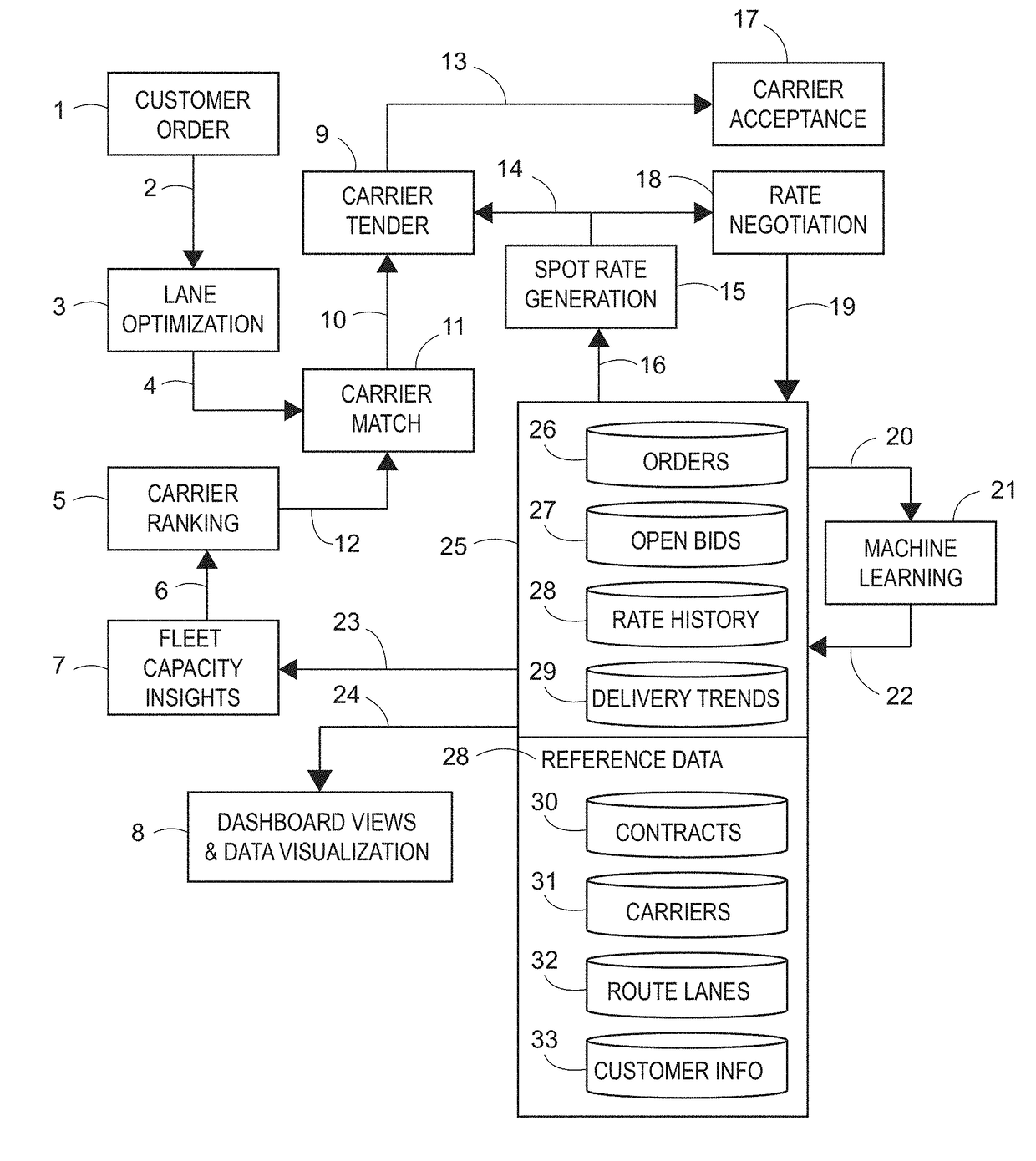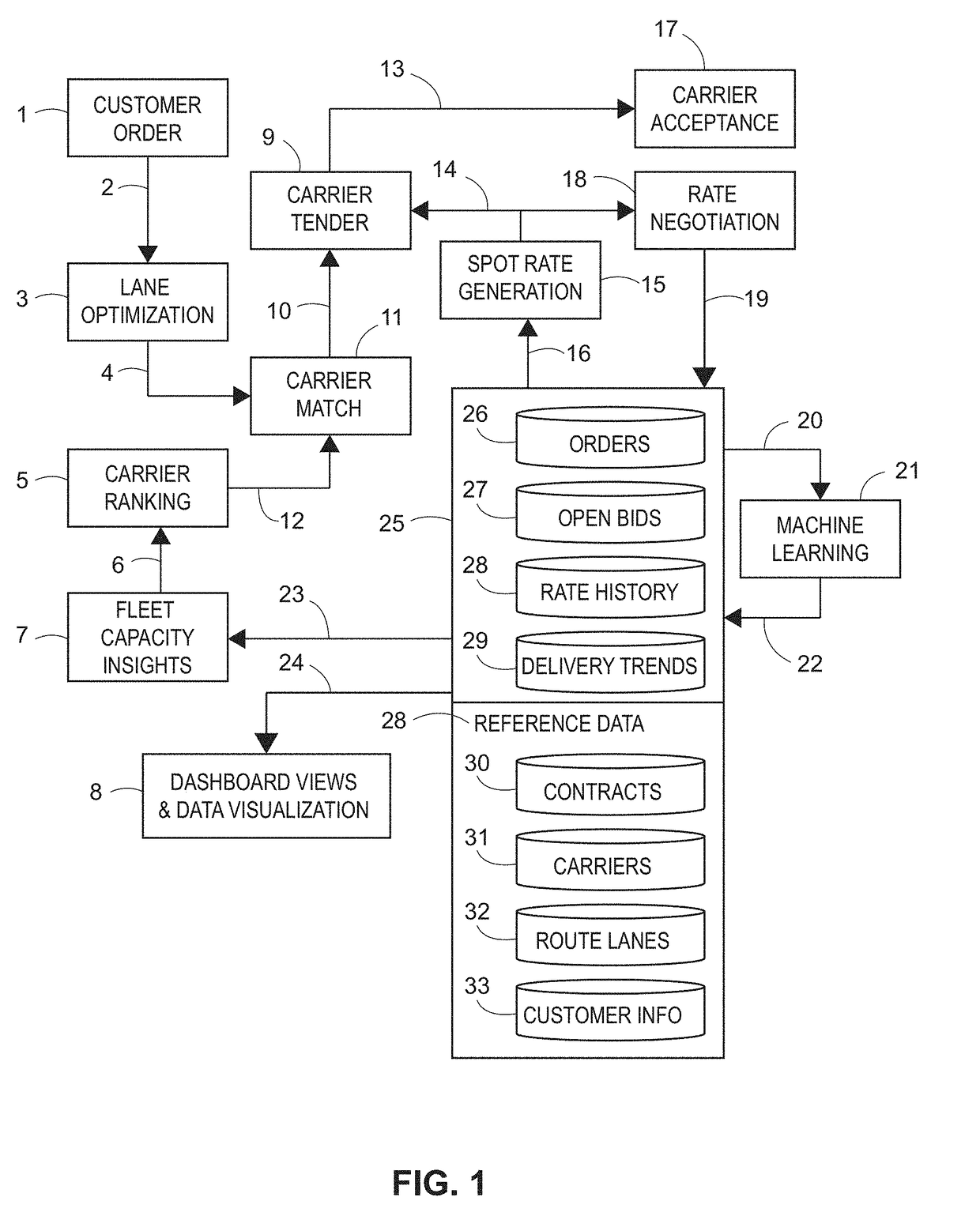Methods of optimizing carrier loads transported across a transportation network by transport carriers
a transportation network and carrier technology, applied in the field of machine learning or artificial intelligence, can solve the problems of loss of efficiency, time and money, damage to customer and partner relationships, and difficulty in matching carriers to loads scheduled for transportation, so as to reduce costs for the ( shipper) user, increase efficiency, and create efficiencies in the logistics/shipping environment
- Summary
- Abstract
- Description
- Claims
- Application Information
AI Technical Summary
Benefits of technology
Problems solved by technology
Method used
Image
Examples
Embodiment Construction
[0040]FIG. 1 is a component diagram showing the set of modules and key interactions of the Carrier Load Optimization process of the preferred solution.
[0041]As evident to practitioners of ordinary skill in the software industry, not all details are depicted in order to avoid cluttering the diagram with overlapping arrows or connections. For example, only: Customer Order module 01 will refer to and maintain the data files 25 such as Customer info data file 33, and add or update the current Orders data file 26 and lack of a connection drawn does not preclude nor prohibit such interaction, which is required as an obvious manifestation in any implementation of a solution.
Customer Order Module:
[0042]The Customer order module 01 captures the delivery order request that specifies minimally, but not limited to, the pickup address, the destination address, the requested delivery due date, and optionally additional orders details such as delivery deadline, cancellation instructions, and speci...
PUM
 Login to View More
Login to View More Abstract
Description
Claims
Application Information
 Login to View More
Login to View More - R&D
- Intellectual Property
- Life Sciences
- Materials
- Tech Scout
- Unparalleled Data Quality
- Higher Quality Content
- 60% Fewer Hallucinations
Browse by: Latest US Patents, China's latest patents, Technical Efficacy Thesaurus, Application Domain, Technology Topic, Popular Technical Reports.
© 2025 PatSnap. All rights reserved.Legal|Privacy policy|Modern Slavery Act Transparency Statement|Sitemap|About US| Contact US: help@patsnap.com



